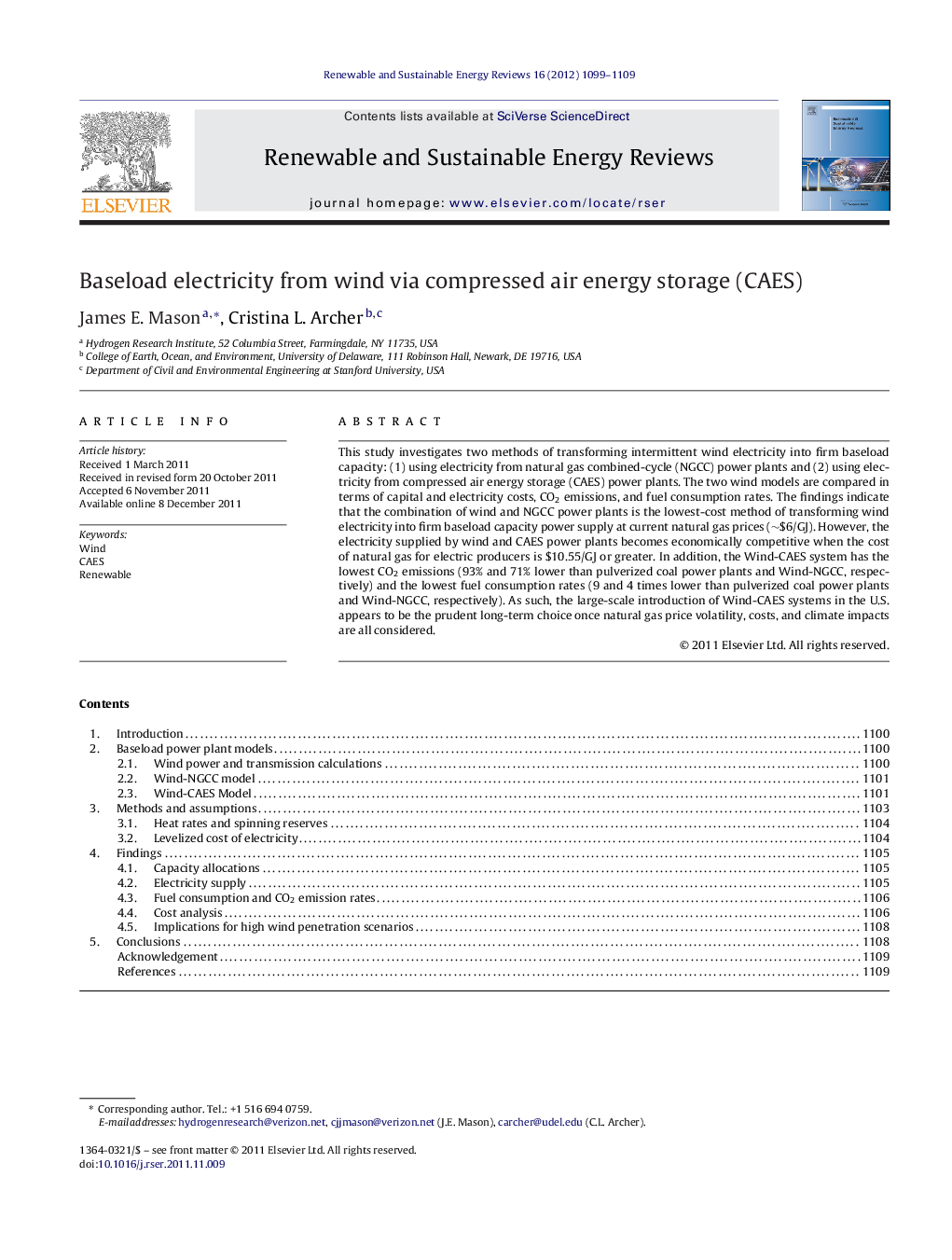| کد مقاله | کد نشریه | سال انتشار | مقاله انگلیسی | نسخه تمام متن |
|---|---|---|---|---|
| 1750776 | 1018403 | 2012 | 11 صفحه PDF | دانلود رایگان |

This study investigates two methods of transforming intermittent wind electricity into firm baseload capacity: (1) using electricity from natural gas combined-cycle (NGCC) power plants and (2) using electricity from compressed air energy storage (CAES) power plants. The two wind models are compared in terms of capital and electricity costs, CO2 emissions, and fuel consumption rates. The findings indicate that the combination of wind and NGCC power plants is the lowest-cost method of transforming wind electricity into firm baseload capacity power supply at current natural gas prices (∼$6/GJ). However, the electricity supplied by wind and CAES power plants becomes economically competitive when the cost of natural gas for electric producers is $10.55/GJ or greater. In addition, the Wind-CAES system has the lowest CO2 emissions (93% and 71% lower than pulverized coal power plants and Wind-NGCC, respectively) and the lowest fuel consumption rates (9 and 4 times lower than pulverized coal power plants and Wind-NGCC, respectively). As such, the large-scale introduction of Wind-CAES systems in the U.S. appears to be the prudent long-term choice once natural gas price volatility, costs, and climate impacts are all considered.
Journal: Renewable and Sustainable Energy Reviews - Volume 16, Issue 2, February 2012, Pages 1099–1109